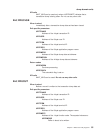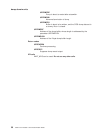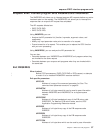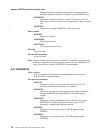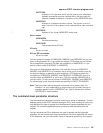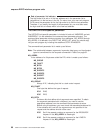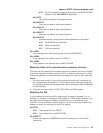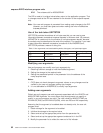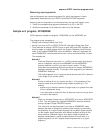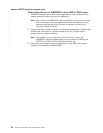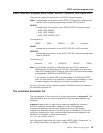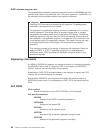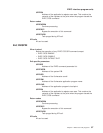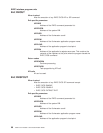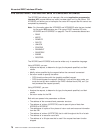Removing user arguments
User exit programs can remove arguments (for which the program is totally
responsible) associated with the LENGTH and MAXLIFETIME keywords:
Assuming that the argument to be removed exists, the user exit program must:
1. Switch the corresponding argument existence bit to ’0’b in the EID
2. Modify the parameter list to reflect the new end of list indicator.
Sample exit program, DFH$XNQE
CICS supplies a sample exit program, DFH$XNQE, for the XNQEREQ exit.
The program gives examples of:
v Coding Exec Interface Global User Exits
v Issuing a mixture of XPI and EXEC CICS API calls within Global User Exits
v Three methods of adding a SCOPE value to exec ENQ and DEQ requests, so
that they apply to multiple regions within the Sysplex. Methods A and B force a
match to an installed ENQMODEL resource definition. Method C bypasses the
use of ENQMODEL resource definitions even if there would have been a match.
The methods are:
Method A
Prefix the Resource name with a 1- to 255-character value (this sample
uses a 4-character value) for the ENQNAME on the ENQMODEL
resource definition to which you wish to force a match. The exit
terminates and processing continues as though the chosen ENQMODEL
had been matched normally. The scope is then supplied by the matched
ENQMODEL definition.
This method applies only to resource names shorter than 255-n (where n
is the length of you chosen prefix).
Method B
Similar to method A, but you replace the first 1- to 8-characters of the
resource name with your chosen string instead of prefixing it. This
method:
– applies only to resource names of length equal to or greater than that
of your replacement string.
– is an alternative to method A when a resource name too long to allow
the use of that method.
Method C
Place a 4-character Scope value in UEPSCOPE, and return UERCSCPE
in R15. This will bypass any installed ENQMODEL resource definition,
forcing a Sysplex Scope ENQ/DEQ request.
This method is not recommended if you have an ENQMODEL table,
because the latter is designed to preserve data integrity by preventing
the possibility of a region scope enqueue and a sysplex scope enqueue
(or two sysplex scope enqueues with different scopes) existing for the
same resource. (Because sysplex and region scope enqueues use
separate namespaces, a region scope enqueue will never wait on a
sysplex enqueue, nor will a sysplex scope enqueue wait on a region
enqueue.)
enqueue EXEC interface program exits
Chapter 1. Global user exit programs 63
|
|



